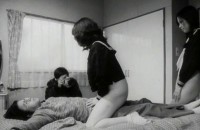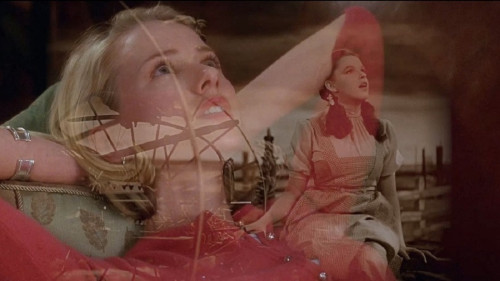Volume 20, Issue 1 / January 2016
A Sense of the Political
In this issue
-

The Cosmopolitan Perspective, the Rebellious Impulse: The Matrix trilogy and Snowpiercer ( Part 1)
How are we to make freedom real?
-

The Cosmopolitan Perspective, the Rebellious Impulse: The Activist, Belle, Dear White People, Omar, Selma and Proposals for the Future (Part 2)
-

Decoding The Secret in Their Eyes: Domestic and Transnational Meanings
-

Koji Wakamatsu: Sex is Politics 24 Times a Second
-

Lost at Sea: A Reappraisal of Ridley Scott’s 1492: Conquest of Paradise
Whether we want to admit it or not, politics informs every nook and cranny of our lives. Cinema is where we often go to escape this harsh reality, but in fact, the sense of the political informs most, if not all, of cinema. As this issue makes clear, politics does not reside only in “political” cinema, but even the most popular of films. The issue kicks off with Daniel Garrett’s sprawling two-part essay on the cultural benefits of a cosmopolitan life style. Garrett searches far and wide into our past, present and looks ahead to our future in an effort to offer his readers signposts toward a more humane, free, forgiving, enlightened and conscientious social and political body. In today’s media landscape (think CNN in the case of US) an inordinate amount of time is given to fleeting political figures whose legacy will not go much beyond prime time. In Garrett’s overview attention is given to human ideas in art, philosophy, politics and aesthetics that have stood for generations and generations. In the first part Garrett focuses on only a few films (Snowpiercer, the Matrix trilogy) but sets the broad intellectual background for ideas of freedom (of mind, politics, art) that will be indirectly and directly explored in an anthology of brief film appreciations of films that can be read as ‘political’ in the broadest sense possible; a focus on recent (2010 onwards) films but also looking back to earlier key films to form a link between cinema present and past. In our third essay, author David Hanley deals with the political as it intersects with the formal. In the case of Argentina, which has its own tradition of Third World film theory set against the dark political years of the military dictatorship (1976-83), the huge success of The Secret of Their Eyes (2009) was used against itself by the more staunch Leftist critics who feel anything that is entertaining and popular must be ‘marred’ by the same ideological film codes of Hollywood populist cinema. Hanley argues against such a reductionist position, noting, as an example, the tradition of popular Argentinian films which contain social and political subtext aimed exclusively at Argentinian audiences. Frédéric St-Hilaire returns with another essay on Japanese cinema, this time the notorious Pinku films of the 1960s through 1990s. St. Hilaire focuses on the noted ‘Godfather’ of the Pink film, Koji Wakamatsu, and does not try to separate the ‘good’ (political and subversive aspects) from the ‘bad’ (exploitative sexuality, sexualized violence), as some critics do, but argues that the genre is complex enough to sustain, in equal measure, the baser aspects of the genre with its revolutionary and subversive strains. St. Hilaire argues that this latter point must be understood as a product of the political volatility of Japan during the period which saw the birth of the Pinku film, the 1960s. As Garrett, Hanley and St. Hilaire demonstrate in their essays, popular film and genre are often excellent containers for the expression of social and political ideas.In the final essay, Nathaniel Carlson offers a critical reclamation of Ridley Scott’s 1492, and argues that the film’s neglect by critics had a political dimension to it. Critics, Carlson argues, were not willing to accept or engage with a film that did not render a more overt judgement on Christopher Columbus. (Donato Totaro, ed.)









